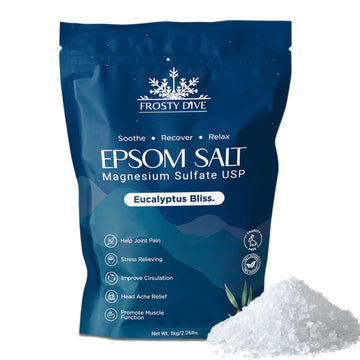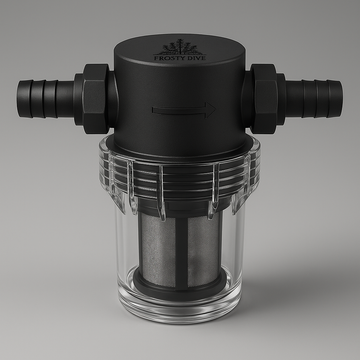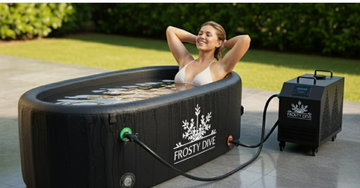A cold plunge—also called an ice bath or cold-water immersion—involves submerging your body (usually up to the collarbone) in cold water, typically between 10–15 °C (50–60 °F), for a short span of time (1–15 minutes) Many people use it after workouts, during wellness routines, or simply for mental resilience.
Possible Benefits
Reduces inflammation – Cold water constricts blood vessels and may help decrease swelling, similar to icing an injury.
Eases muscle soreness – Using cold immersion post-exercise might help ease delayed-onset muscle soreness (DOMS), especially within 24 hours after intense training
Enhances mood & mental strength – The cold shock response may release endorphins or stress hormones, giving you an emotional lift and a feeling of achievement
Boosts alertness – The sudden chill can wake you up and help you feel more energetic.
Improves circulation – Repeated cold exposure trains blood vessels to narrow and then expand, possibly strengthening vascular response.
What You Should Watch Out For
Cold shock response – A sudden drop in temperature can trigger uncontrollable gasping, hyperventilation, and a spike in heart rate and blood pressure
Heart & circulation strain – Those with heart disease, high blood pressure, diabetes, circulation problems, or nerve issues may face serious risks
Hypothermia & cold injuries – Staying too long can drop core temperature dangerously. Even short plunges may risk non-freezing cold injuries.
Loss of motor control – Numb fingers or toes during a plunge may make it hard to get out safely.
Drowning risk – Involuntary breathing or cold-induced panic can cause someone to inhale water.
Who Should Skip or Stay Cautious
Anyone with heart-related issues (arrhythmias, high blood pressure, coronary artery disease).
Those with diabetes, poor circulation, peripheral neuropathy, Raynaud’s phenomenon, or cold-sensitizing conditions
People on medications that affect blood pressure or blood flow .
Pregnant individuals or those with serious illness—consult a doctor first .
How to Practice Cold Plunging Safely
- Check with your doctor first, especially if you have health issues.
- Start mild – Begin with water around 15 °C (60 °F) for just 1–3 minutes; gradually progress.
- Never plunge alone – Always have someone nearby in case something goes wrong.
- Ease into the water, don’t dive in directly—this may reduce shock.
- Limit time – Aim for 2–10 minutes depending on your comfort and temperature.
- Warm up slowly after – Change into dry clothes and use gentle heat; avoid jumping into very hot water right away.
- Pay attention to signs – Shivering, numbness, confusion, chest pain, or dizziness = time to get out.
Is It Worth It?
Cold plunging has solid potential for reducing inflammation, aiding recovery, and sharpening mental resilience. But the science is far from conclusive—many benefits could be partly placebo-driven, and the risks, while uncommon, are real. Compared to proven alternatives like active recovery or light aerobic work, cold plunges might be one tool, not a cure-all.
Final Take
Cold plunges can feel invigorating and may help with recovery and mindset, as long as you treat them with respect and caution. The key? Ease in slowly, limit time, never go it alone, and check with a healthcare professional if you have any risk factors. Done right, a cold plunge can be a refreshing boost—but it's no shortcut to health.

























